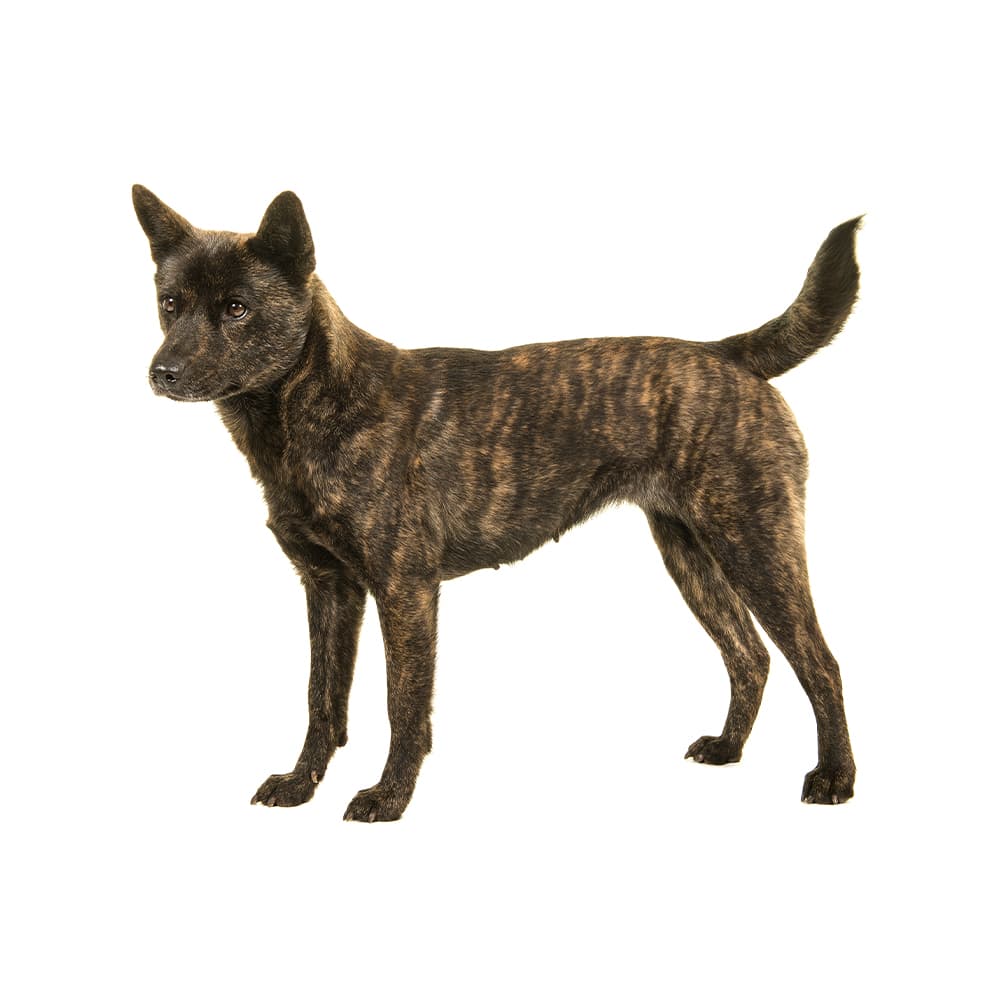Discover your dog's connection to this breed and 200+ others


Discover your dog's connection to this breed and 200+ others



The Kai Ken, also known as the Tora Inu or Tiger Dog, is a rare and ancient Japanese dog breed that was discovered in 1929 near Mount Fuji in the Kai province. It was traditionally used for hunting, and as a versatile working dog in the Kai region. The breed was recognized by the Japanese Kennel Club in 1934, and it is believed the first Kain Ken came to the United States in the 1950s. In 1990 and 1991, a male and three female dogs were brought to the U.S., respectively. These dogs started the genetic pool for the Kai Ken that would be bred in America. There were originally two types of Kai Ken: a thick, stocky bear-faced version, and a thin fox-faced version. The Kai Ken is one of the six native Japanese dog breeds recognized by the Japanese government as a national monument, alongside the Akita Inu, Shiba Inu, Kishu Ken, Hokkaido, and Shikoku.
The Kai Ken is a generally healthy breed, but may suffer from allergies, seizures, and luxating patella. Patella, hip, and ophthalmologist evaluations are recommended, along with cardiac exams and progressive retinal atrophy optigen DNA tests for this breed. Genetic testing is recommended, including for the following additional conditions: hyperuricosoria, degenerative myelopathy, and progressive rod-cone degeneration.
Croatian Sheepdogs are known for their intelligence, agility, and strong work ethic. They have a lively and alert temperament, making them excellent watchdogs. These dogs are often reserved with strangers but loyal and affectionate with their families. Croatian Sheepdogs are very active and require regular physical and mental stimulation. If not given a job to do, they may become bored and develop problem behaviors.
This is a breed that requires an active lifestyle and is ideally suited to a rural environment where it can have space to run and work. They are generally good with children and other dogs if properly socialized from a young age. However, due to their herding instincts, they may try to herd small children and animals.
Given their herding background, Croatian Sheepdogs can excel in dog sports such as agility, obedience, and herding events. Their intelligence makes them relatively easy to train, but they can have a stubborn streak, so consistent, positive reinforcement methods work best.
A canine genetic lineage is a group of individuals or entire breeds that descended from common ancestors predating modern breed formation. Often these lineages are associated with a ‘type’ of dog with a unique historical working role and associated behaviors (e.g., herding, scent hunting, etc.).
Spitz and Sled Dogs originate in the Arctic and subarctic regions which caused them the develop adaptations to cold climates. Some of these adaptations give rise to characteristics of the lineage, most notably a dense double coat that helps with insulation. The lineage of these dogs can be followed back to ancient breeds developed by Indigenous people. These ancient breeds were used as an aid for transportation, herding, guarding, and hunting. These jobs have created dogs that are independent, intelligent and have strong work ethics as well as a sturdy body that helps them to pull sleds or go on long journeys over rough terrain.
Example breeds with ancestry from this lineage include Akita, Chow Chow, and Siberian Husky.
The Croatian Sheepdog was recognized by the Fédération Cynologique Internationale (FCI) in 1969 and to the American Kennel Club (AKC) Foundation Stock Service Program in 2017.
According to the AKC, the earliest written document about Croatian Sheepdogs, titled, "Canis pastoralis croaticus", dates back to 1374. It was discovered in the archives of the diocese of Djakovo, by “father of the breed” and veterinarian Dr. Stjepan Romić.
Recommended by top vets with decades of experience
21 breeds
64 genetic health markers
50 genetic trait markers
